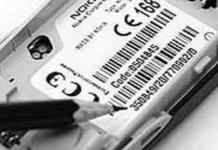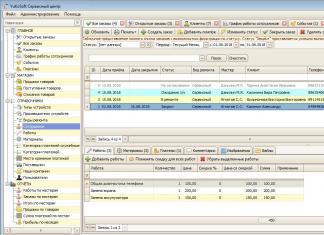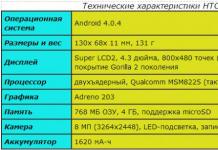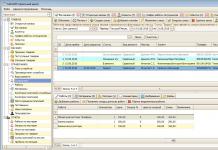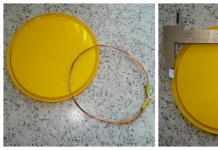Installing drivers for various equipment is one of the most important elements in setting up a computer's operating system. It can be extremely difficult to find a “lost” driver for a specific device. There are several ways to restore drivers after accidental damage or deletion.
Automatic installation
The easiest way to find a remote driver is to install it automatically. To do this, open the properties of the “My Computer” menu, go to “device manager” and enter the name of the device for which you want to update the driver. Then you need to right-click on it and select “Update drivers”.
Installation from the site
If the first method of searching for a driver does not work. You can try to find it on the official website of the device manufacturer. To do this, go to the site, study its structure, find the necessary driver and, after downloading, install it on your computer. You can also use Device Manager to install
Installation using software
Experts advise always having various useful programs on hand, which are databases of the most common hardware drivers. One such program is Driver Pack Solution. Find out the algorithm for how to restore a deleted driver using this program.
First, you should download this program from the official website and install it on your computer. Next, you need to run a file called DriverPackSolution.exe. This file is located in the root directory of the program. After the program is opened, an automatic scan of the equipment installed on the computer will immediately begin. Most likely, the system will offer to update outdated device drivers in order to install updated programs for non-functional equipment.
At the next stage, you should select the drivers that are necessary for installation on your computer, after which you need to click on the “Update all” button. You will then need to restart your computer to apply the settings. As a rule, this must always be done when installing drivers for important elements, such as a video card or motherboard.
When choosing new driver update packages for stable hardware, you should be extremely careful. The thing is that before being released into the public domain, new drivers are not always tested. Then the program may incorrectly detect your device and offer to install the wrong driver for it. To protect yourself, you should create a system restore point before updating. If your computer cannot boot normally due to the absence of an important driver, use boot in safe mode and install it from there.
For proper operation of the video card, special software is required, its current version. It often happens with NVIDIA products that drivers fail for no apparent reason.
There are several ways to solve this problem, and each of them will be discussed in detail in this article.
Method 1: Reinstalling the driver
The simplest, and therefore the very first, method is a banal reinstallation of the driver. In this case, even the current driver will need to be uninstalled first.


There is no need to worry about the safety of such actions. After completing the manipulations, Windows will automatically install the standard driver. It will be relevant until the system detects NVIDIA software.
It happens that the software installation does not proceed quite correctly, which is fraught with all sorts of problems and malfunctions of the device. Blue screen, image shutdown, picture freezes - all this can be corrected by just reinstalling the software. There is a wonderful article on our website about how to correctly reinstall drivers for NVIDIA video cards, we recommend that you read it.

However, this is not a panacea for such a problem. Quite often, the video card simply does not accept the new driver. Whether this is a mistake by the developers or something else is difficult to say. In any case, it is necessary to work out this option too, and for this you will need to install older software. It's a little more difficult than just updating or reinstalling it.


Finally, you only need to restart your computer for the changes to take effect. If this method does not help you, then you should pay attention to other causes of the problem, which are described below.
Method 2: Search for overheating
The most common problem with video cards is overheating. This is clearly indicated by the fact that the driver crashes precisely during games or running programs that are demanding on the system. If this is not very similar to your case, then you should not scroll further, because verification is still required. On our website you can find an article that provides an example of the most popular programs and utilities that can monitor the temperature of a video card.

If after the tests it turns out that the video card is overheating, then it is necessary to take a whole range of measures to improve its condition.
- Check the cleanliness of the system unit, the secure fastening of each cooler and its functionality. If you notice that there is too much dust somewhere in the fan and it is impossible to get it out, then it is best to remove the screw and clean it.
- Improve the air supply and exhaust system by installing additional coolers.
- Remove programs that overclock your video card, or simply disable them.
Most overheating problems should resolve if you follow the above steps. However, the problem with the driver crashing may remain relevant. If this happens, then move on to the next methods.
Overclocking a video card, even if it is factory-made, does not promise long-term performance for the equipment. Therefore, if you want your device to please you much longer, then disable all accelerations.
Method 3: Resolving conflict between driver and special applications
A rather serious problem is the conflict between the driver and applications installed for the video card. The first thing to think about is the standard programs that are installed on every computer running NVIDIA products.
Most often, problems arise during 3D graphics settings or anti-aliasing. In other words, some parameters are disabled in the video card program, but they are required in the application or game. A conflict occurs and the driver is disabled. The easiest way to solve this problem is to reset the settings to the default value. This is done very simply.


This simple method can sometimes be the most effective. However, in fairness, it is worth noting that driver resets due to anti-aliasing or 3D settings occur only at certain moments, in certain applications or games, which is a typical indicator of a driver and software conflict.
Method 4: TDR Setup
Every Windows operating system has a built-in TDR mechanism. It is notable for the fact that it can restart the driver when it does not respond to requests. Directly in our case, we need to try to increase the response delay time from the video card. To do this, we will create a special file in which we will write the necessary parameters. It is worth noting right away that you cannot use this method, as there may be problems with the operation of the video adapter.

If you set the parameter «0» , then we simply disable the TDR mechanism. This option is also being considered, and if increasing the delay time does not help, then we use it.
It is possible that the problem is not in the operating system or driver, but in the hardware itself. A video card can be used for a very long time and during this period it can simply exhaust all its capabilities. But first, you need to try all the methods listed above. It is quite possible that the solution to the problem lies somewhere in them.
Thanks to drivers, the system gains access to control equipment connected to the computer. Correctly installed software is the key to the operation of any device, so the question of how to restore a driver if it has stopped performing its function is very pressing for users.
Recovery
Windows automatically creates backup copies of drivers, allowing you to roll back the software of connected equipment to a previous working configuration. This is done as follows:

If the previous version of the software is not saved on the system, the “Roll Back” button will not be available.
A warning question will appear on the screen, from which you will learn that rolling back to an older version reduces the functionality and security of the device. If you decide to continue the driver recovery procedure, click Yes. 
After rolling back the device software to a working state, you can close all running windows and check if the error is fixed. If a broken driver is causing problems due to which the system refuses to boot normally, you can try the above procedure in safe mode.
If rolling back the software did not help solve the problem, try installing drivers on Windows 7 by downloading updated versions from the official source.
Loading a successful configuration
Another boot option, in which all drivers will be returned to a working state, is to use the last known good configuration. To download it, follow the following algorithm of actions.
A common error in Windows 7 and less commonly in Windows 10 and 8 is the message “The video driver has stopped responding and was successfully repaired” followed by text about which driver caused the problem (usually NVIDIA or AMD followed by the text Kernel Moe Driver, options are also possible nvlddmkm and atikmdag, meaning the same drivers for GeForce and Radeon video cards, respectively).
This instruction contains several ways to fix the problem and make sure that messages that the video driver has stopped responding do not appear in the future.
If you have overclocked a video card yourself, then most likely you know that the problem in question may be caused by overclocking. If you haven’t done this, then there is a chance that your video card is factory overclocked; as a rule, the name contains the letters OC (Overclocked), but even without them, the clock frequencies of video cards are often higher than the base ones provided by the chip manufacturer.
If this is your case, then try setting the base (standard for this graphics chip) GPU and memory frequencies; you can use the following utilities for this.
For NVIDIA video cards - free NVIDIA Inspector program:

If it doesn't work and the problems are not fixed, you can try using GPU (Base Clock) frequencies lower than the base ones. You can download NVIDIA Inspector from the developer’s website http://www.guru3d.com/files-details/nvidia-inspector-download.html
For AMD graphics cards, you can use AMD Overdrive in Catalyst Control Center. The task will be the same - set the base GPU frequencies for the video card. An alternative solution is MSI Afterburner.
Additional Information
In theory, the cause of the problem could be any program running on the computer that actively uses the video card. Moreover, it may turn out that you do not know about the presence of such programs on your computer (for example, if it is mining malware).
Also, one of the possible, although not often encountered, options is hardware problems with the video card, and sometimes (especially for integrated video) with the computer’s RAM (in this case, “blue screens of death” may also appear from time to time).







